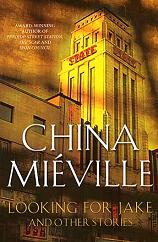
The City & The City
China Miéville
312 pages
published in 2009
Right. China Miéville is one my favourite writers, one of the few (together with Terry Pratchett, Iain M. Banks and Ken MacLeod) I’ll always buy in hardcover. I love the way in which he fuses science fiction and horror and fantasy together into what he himself has called New Weird, essentially a new genre that emphasises the grotesque and baroque sides of its parent genres. What I also admire in Miéville is that he keeps his imagination firmly grounded in a keen appreciation of political and economical realities, no doubt helped by his background as a proper socialist. That combination made Miéville’s creation of New Crobuzon one of the more fully realised cities in science fiction/fantasy. With Miéville there’s always the feeling that his heroes do have to work for a living, that the daily struggle for existence is just as important, if not more as whatever existentialist crisis they’re on the fringes of.
It’s this sense of realism that links The City & The City with Miéville’s earlier novels. Set on Earth in two fictional Eastern European cities with no fantastical or science fictional elements and written as a police procedural: The City & The City cannot be more different from its predecessors. Yet at the core of the novel are the same political and economical themes Miéville always write about. At its best the police procedural is a very political novel, just because policing itself is intensely political — just think about the decisions being made about which crimes to prosecute and which not, which investigations to support and which to starve of resources. There’s therefore a long tradition of writers using the police procedural as a vehicle for social criticsm and Miéville fits in well with this tradition. Of course Miéville being Miéville he does more than that but we’ll get to that.
